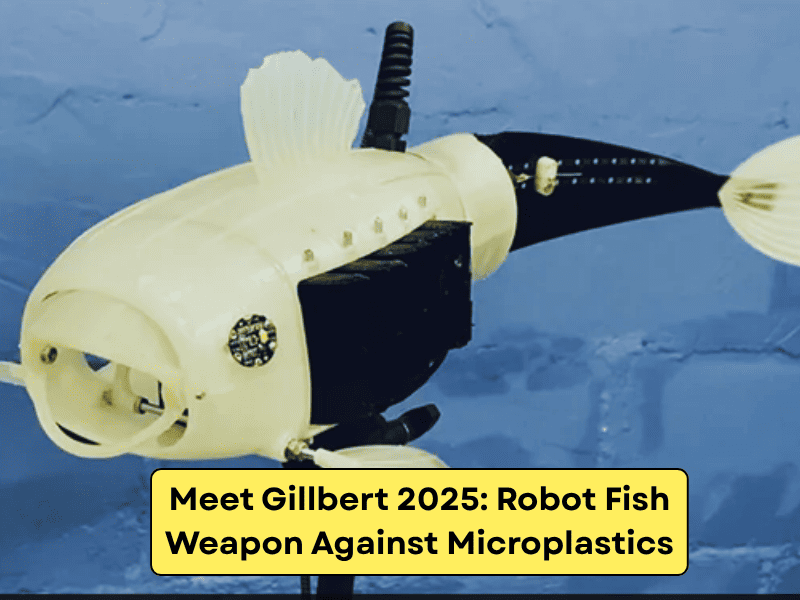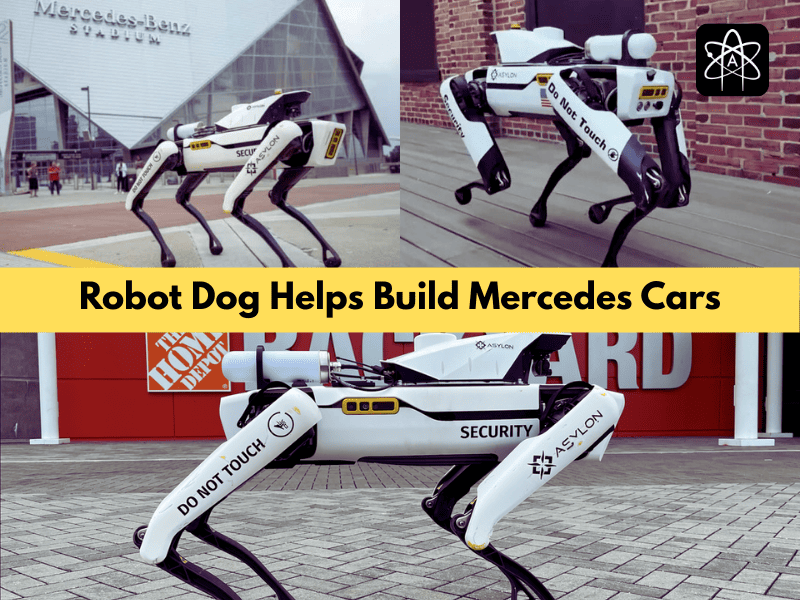The fish that do not eat other little fish, but the microplastics in the ocean, sounds interesting. If the idea of it gets increased, the time is not far when the oceans will be fully clear. The robots, which look like a water animal and clean the ocean, are placed in dirty areas to make cleaning and maintaining them easier. This idea came into reality with the help of Eleanor Mackintosh. The name of his robot fish is Gillbert, so let me know about Gillbert in Little Deep.
Making of a Gillbert: Robotic Fish
The fish that eats microplastics was made by the student named Eleanor Mackintosh, who participated in the Natural Robotics Contest. The size of the fish is 50 cm long, and it consumes the plastic, which is at least 1 mm or 5 mm long. All this junk gets stored in the body of a fish until it’s full and then goes for disposal. The robot can only be managed remotely, but with further improvements, it can work automatically.
Read More: China’s Walker S2: The First Humanoid Robot That Changes Its Batteries
Read More: Perplexity Pro with Airtel: Get ₹17,000 AI Tool Free for a Year in 2025!
How Robot Fish Works:
The robot fish mimics a real fish. Here are some of the features of its design:-
- Soft Tail: The tail works with the help of a motor and is flexible. This helps the robot fish swim smoothly and quietly. This feature makes it hard to understand from afar if it’s a robot or an actual fish.
- Suction mechanism: The fish sucks the water and then filters the plastic from it. It eats water only and removes the microplastics from it. The fish stores water in its body.
- Plastic detection: The fish detects the plastic in the water environment through its gills, and it sometimes takes the tiny particles in the gills, too. The sensors help in detecting only tiny plastic parts in the water.
- Safe storage: All the plastic gets stored safely so that it does not get dissolved in the water again. The storage is safe so that it can later be removed easily without harming the body.
- Safe for sea animals: The fish does not include any sharp or harmful parts that can hurt the animal in the sea. Its design makes it look like it’s one of them.
Pros and Cons of Robotic Fish
Pros:
- Finding hard-to-see particles: Removing the easily visible plastic from the sea is not that hard, but removing the ones that can’t even sometimes get caught in the hand is. The fish is made to target the tiny particles, which are nearly invisible to the naked eye.
- Good for nature: The robot fish is perfect for those places where people believe in cleaning the water, even if there is a tiny piece of metal, so it should be removed. Imagine seeing the water where even a little harmful plastic is not there to hurt animals or humans.
- Easy access to hidden areas: Like any other fish, this robotic fish can also reach the shallow space where boats usually can’t reach. This will help in cleaning those areas where there must be some animals living in a bad environment.
- Scalable tool: The device can be improved and can become a much better version in the future. This version is its first model; imagine how its improved models will look. This holds great development ability.
- Natural design: The robotic fish is a robot that may have different features from a normal fish, but 90% of the time, it looks like a real fish. This feature makes it very easy to be part of the ocean animal family.
Cons:
- Less capacity: The fish can only collect small plastics, which means it will not work in oceans where the amount of plastic is large. This robot is good for the already clear water areas and for maintenance purposes.
- Limited energy: The fish works through a battery, which means it can only work for a limited period. If it becomes something that works through solar power, then this will be much better. There is a high chance it can stop in the middle of an ocean before returning, and can create more unnecessary particles.
- High maintenance costs: According to its current model, the fish needs regular maintenance, which can cost a lot of time and money. The making of this fish is also not very cheap.
- Under development: The robot fish is still in its developmental era. The model, which is currently being created, is more like a testing one; it still needs a lot of improvement and changes to work properly.
- Potential failures: There is a high chance that if the robotic fish stays in water for a long time, it can malfunction because of the extreme water pressure. The chances of getting hit by another fish are also there.
The Future of Gillbert: The Robotic Fish
The robot fish is a great idea to make the oceans clearer, and with the right improvements in the future, it can become the best version of itself. The idea of it is already getting liked by many people, and there are changes that people will make to create better versions of it in the future.



